I’ve been planting way more bulbs than I once did. And not just spring bulbs, but summer bulbs, fall bulbs and even winter bulbs. I’ve moved beyond the standards. Daffodils, tulips and old favorite flower garden bulbs are in my collection, but I’m increasingly drawn to wilder and more natural looking specimens. And native bulbs.
More bulbs help me bridge the times when my gardens are lacking other blooms. They really are the easiest way to get get the elusive “year-round interest” we all want. I tuck them in-between and around every other plant in my my garden. They help achieve a greater planting density and a greater biomass. (Which is good for the environment). Plus, the naturalizers happily give that undone vibe to the garden that can almost make you think that everything just sort of beautifully fell together.
I’ve been asked lots of questions about bulbs over the years. And I expect I will be asked more.
(Go on – DM me on instagram or leave a question in the comments below).
If I haven’t already answered it below – I’ll add it to the list!
Answers to All Your Questions About Flower Garden Bulbs:
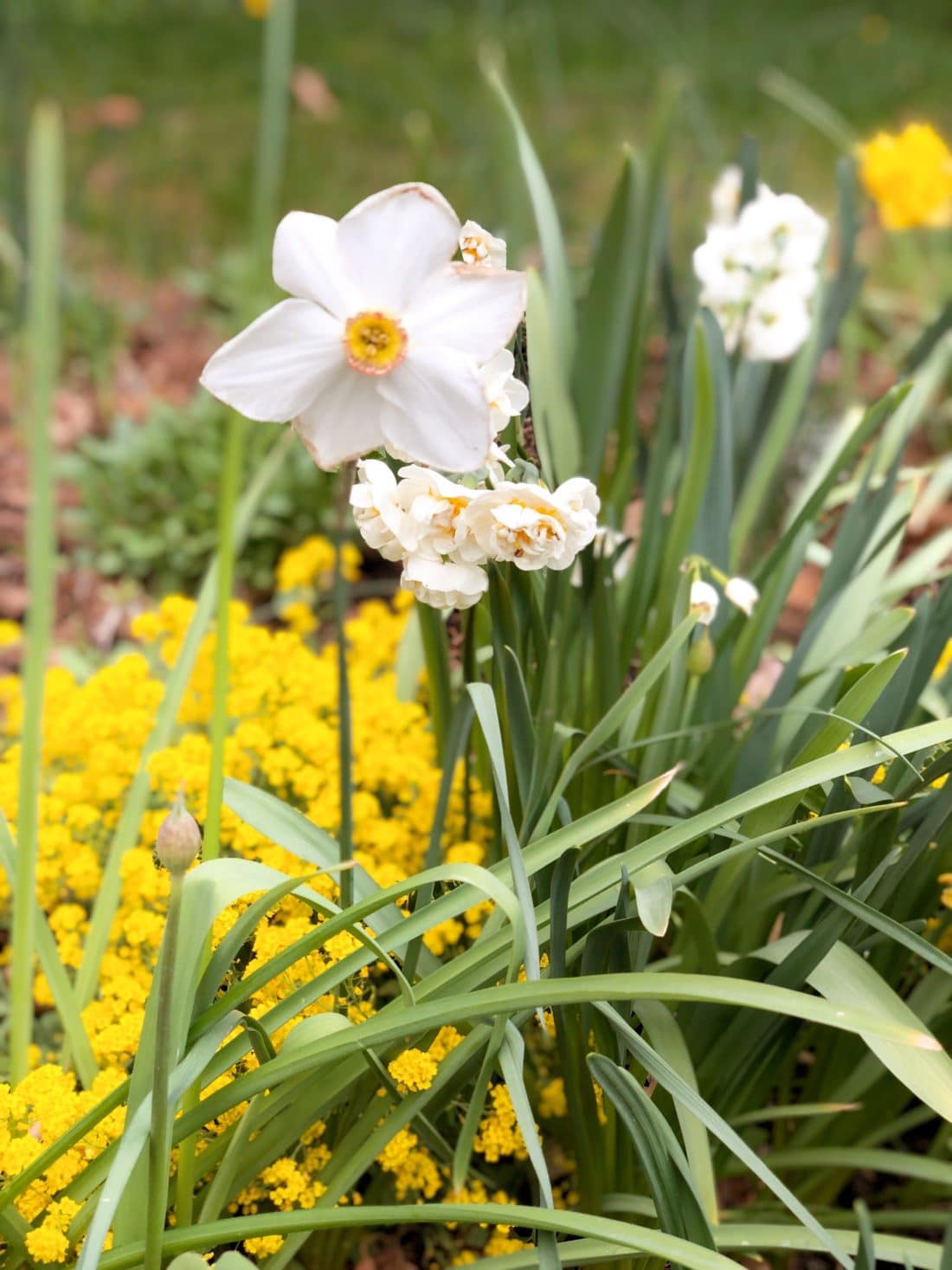
1) Can I save fall flower garden bulbs to plant in the spring? (especially since it has been so dry due to drought and no rain)?
Related: I forgot about the bulbs in my basement. Can I plant them in spring?
Plant them now (I’m writing this in the fall in the northern hemisphere).
All bulbs need a period of rest, or dormancy before they will bloom again. Just like trees cycle through seasons of growth and then dormancy, bulbs are the same.
Many bulbs (daffodils and tulips included) need a period of cold to make the bulbs go dormant. Without the dormancy, they won’t bloom again.
Some bulbs (amaryllis, crocosmia, paper whites, and many types of lilies for example) do not need cold to set them into a cycle of dormancy. They can be put into dormancy by cutting them back, and restricting water and light.
How do you know if your bulbs require cold or not?
Google is your friend. But as a general rule, most spring blooming bulbs need cold to trigger dormancy. And they will come out of dormancy to bloom with warmer temps.
So, if you want to force a tulip or a daffodil bulb (or a crocus, hyacinth, or snowdrop among others) to bloom you will need to get the bulb cold . Either in the wintery ground outdoors or in a refrigerator.
So to answer the question – if you have a bulb that needs cold (many of them), and if you don’t plant them in the fall before the cold season, then you will have to fake a winter for them to get them to bloom. This requires some time (usually at least 12 weeks or so) in a refrigerator to induce dormancy so that when they break dormancy (after you pull them out of the fridge) they will go into a bloom cycle.
I’m not a fan of forcing. (That is what we call this manual process of inducing dormancy by chilling and then warming bulbs when we want to them to bloom). Its ok to do it in a pinch in your house- but at large commercial scale it is worryingly resource intensive.
But even in small quantities – do you really want to displace the wine and beer in your veggie drawer to a bunch of bulbs for 3 months? I don’t. Especially when nature will do the chilling for free. All I have to do is just get them in the ground before it freezes too hard to dig.
When you see pots of daffodils and tulips that are perfectly timed for Easter, you can trust that those were forced at tremendous environmental expense. They will cost a lot more money and they will only be in a handful of colors and varieties.
If you want better colors and more interesting varieties the only way to get them is to plan ahead. Plant in the fall for blooms in future seasons.
But back to the question about bulbs in dry weather. It is probably not as much a problem for the bulbs as you might think. They will get some moisture over the winter and into the spring – and they really don’t dry out that fast. Yes, if you live in the Sahara (or similar) a bulb will eventually dry out and die. But they are much more likely to do that in a shipping box or bag (or shoved in the corner of your basement) waiting to be planted, than they will in the ground where they are adapted to live.
Fresh bought bulbs should be healthy and plump – full of all the resources they need to bloom the first year. In bulbs, bigger and more voluptuous is usually better.
If your conditions are less than ideal (I.e. extreme drought) you will likely not see the impact of that until the second year. New bulbs will arrive with everything they need for their first year bloom.
If you leave bulbs to sit around for too long, they will show signs of strain. Mostly they will begin to dry out. Plant them as soon as you are able – bulbs will restock their energy and resources in the soil, through the year, and after they bloom.
So get them into the ground before the ground freezes. And then sit back and wait for a glorious spring!
2) Is now the time to plant garden bulbs?
First – When is now? Spring, Summer, Fall, Winter?
Truth is, It doesn’t actually matter.
The answer is yes. To all of the above. Now is always a good time to plant garden bulbs.
Now, (fall) is the time to plant spring bulbs. (daffodils, tulips, allium, snowdrops, crocus, scilla, ciondaxa, fritllaria, hyacinth, etc).
Summer and fall blooming bulbs and tubers can, however, be planted in the spring (and also in the fall). These include lilies, some of the later blooming alliums, gladiolus, dahlia that are hardy to your area, and basically anything that is going to bloom in the summer or fall.
Basically you can be planting some sort of bulbs all year round.
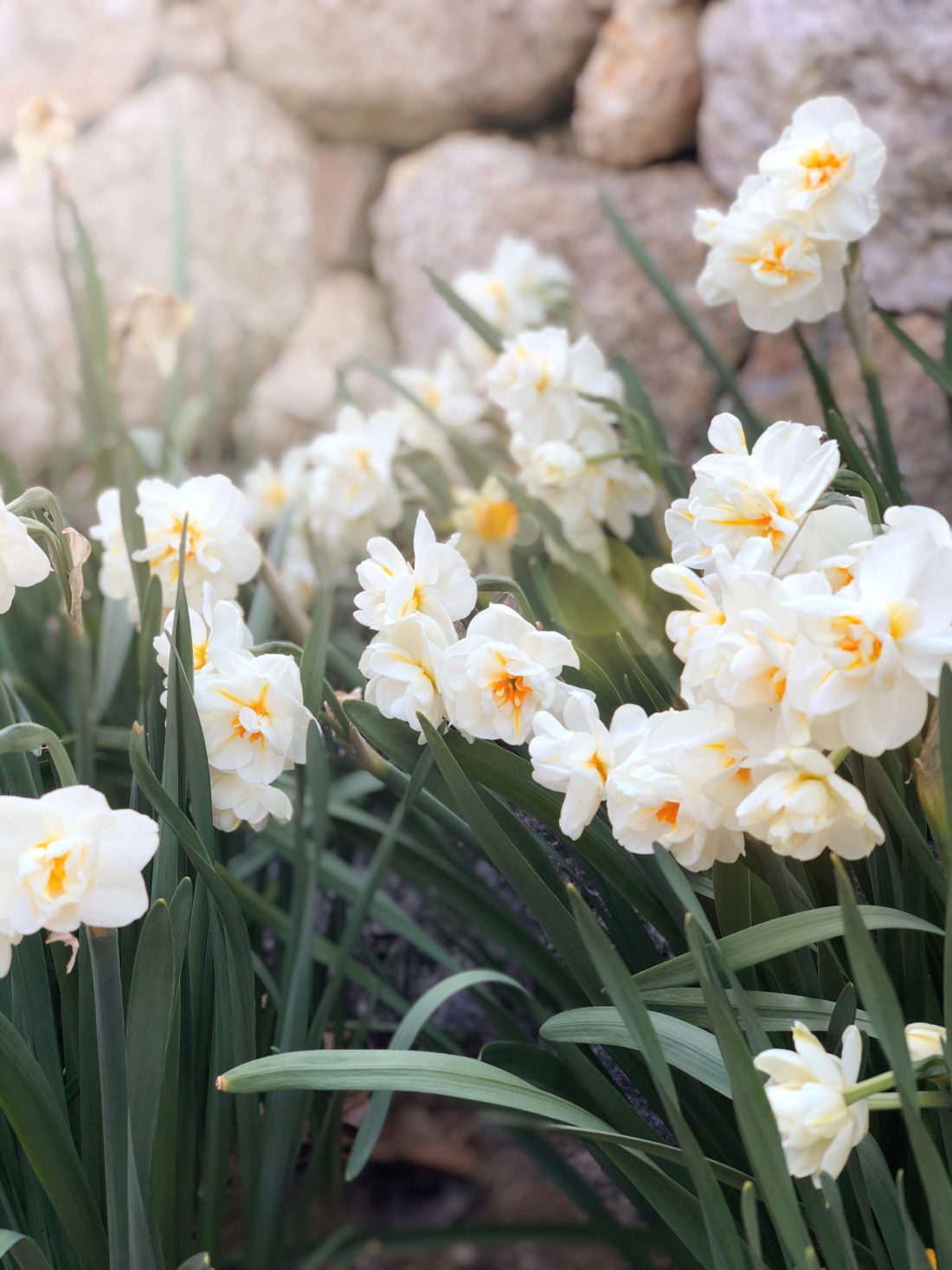
3) Do you fertilize when you plant flower garden bulbs?
I personally do not use synthetic fertilizers (too lazy and too cheap to bother) but I rely heavily on consistently building and improving my soils.
Whenever I plant anything, I take the opportunity to add compost. And I mulch with compost. This works for me in a garden that is full of plants that require this type of soil.
Note: not all plants want super enriched soil though…this is where things get less clear.
But since we are talking about bulbs, the best type of soil for most flower bulbs is a sandy loam. It can be described as a balanced mixture of clay, sand, silt with a modicum of organic matter. Sandy loam usually is around neutral pH and affords good water drainage, root permeability and adequate nutrition.
But if you want to add extra fertilizer, you can – but make sure not to put the fertilizer directly on the bulbs. You can burn the bulbs if you pile fertilizer directly on top of them. Mix it with the soil in the bottom of the hole, and/or sprinkle it on top of the soil. Water that falls on top of the soil will carry the fertilizer into the soil through percolation.
4) How many flower garden bulbs do you plant together?
As for how many bulbs in a hole – it depends on what I am planting. I define a hole as generally a foot shovel size. Smaller bulbs usually means more in the hole. I look at the spacing guide on the package and then I ignore it. <kidding>
Actually not kidding – I kinda pay attention but I definitely round down.
Ok – Real truth – I probably half the recommendation – but its not like I am measuring. Fussing over bulb spacing would ruin my vibe.
Bottom line – Flower bulbs look better when closer together and randomly spaced. DO NOT PLANT THEM IN A STRAIGHT LINE – YOU WILL BE DISAPPOINTED.
If you plant them too close to each other your only risk is that if the bulb naturalizes, you will get to a point of crowding sooner. I’ll take a rowdy crowded bunch of blooms over awkward lonely soldier flowers every day.
4.5) What does it mean if a bulb naturalizes? Does that mean it is a native bulb?
Some bulbs will grow new baby bulbs and in this way, they will spread into bigger thicker clumps over time. This is called naturalizing. I like these, because free self spreading plants always have a way of looking really great.
Native bulbs are bulbs that grow in your region as part of the naturally evolved ecosystem.
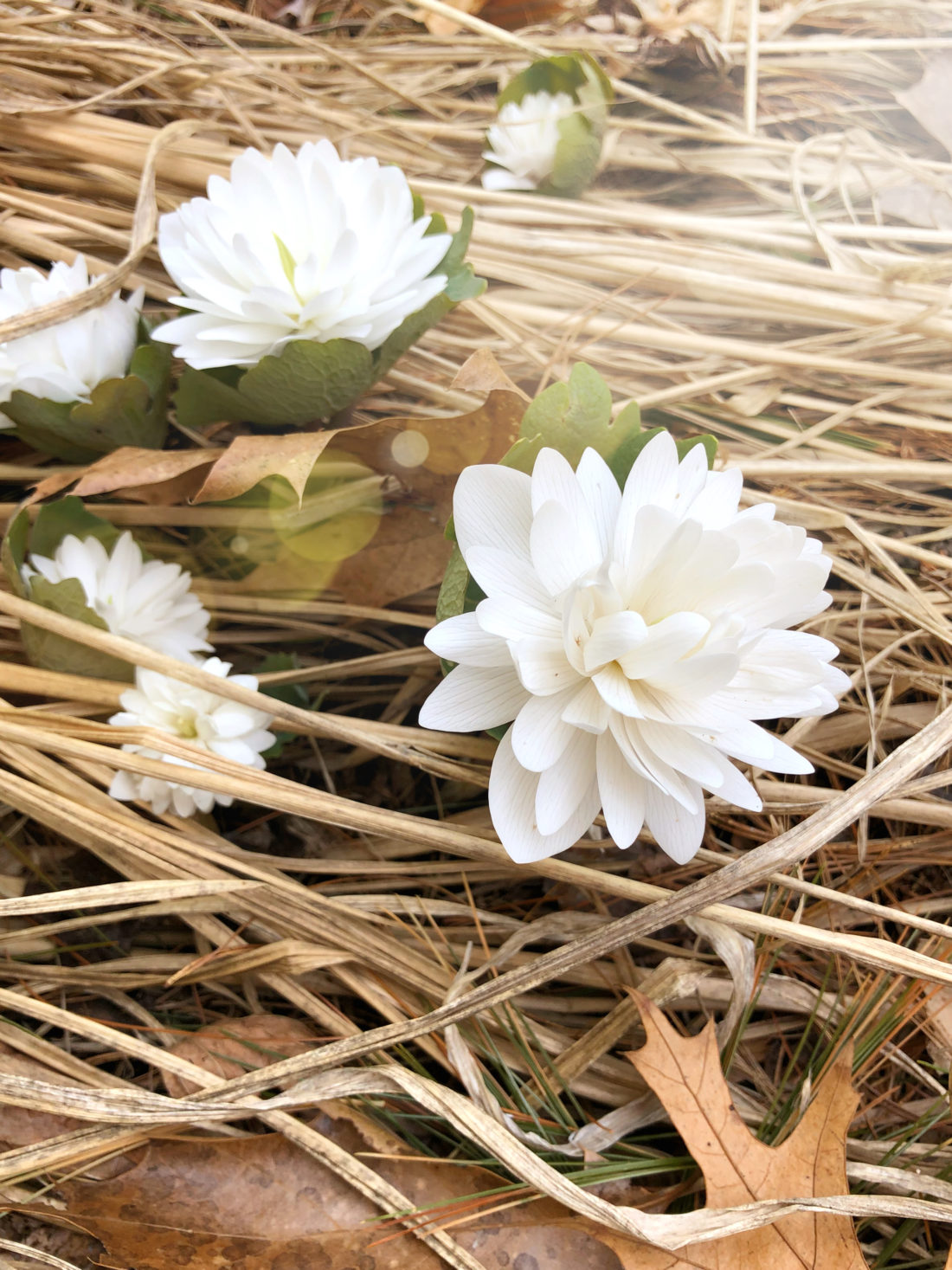
5) Are there any native bulbs? is that even a thing?
Yes! There are many bulbs that are native to North America. Native bulbs include Claytonia, trout lilies, brodiaea, calochortus, erythroniium, bloodroot, trillium, mertensia, varieties of dicentra, podophyllum, and probably more that I don’t know (note – I am referring to natives of the region where I live and where the person who asked this question lives… which is generally in the northeastern USA). Natives may(probably will) be different where you live. Also worth noting -some of what I just listed are not only bulbs, but also corms, tubers and rhizomes.
5.5) What bulbs are native to the Pacific Northwest?
I just listed all the native bulbs to the USA (that I know of) in the previous answer – but in addition – camassias are native to the mountains of the PNW.
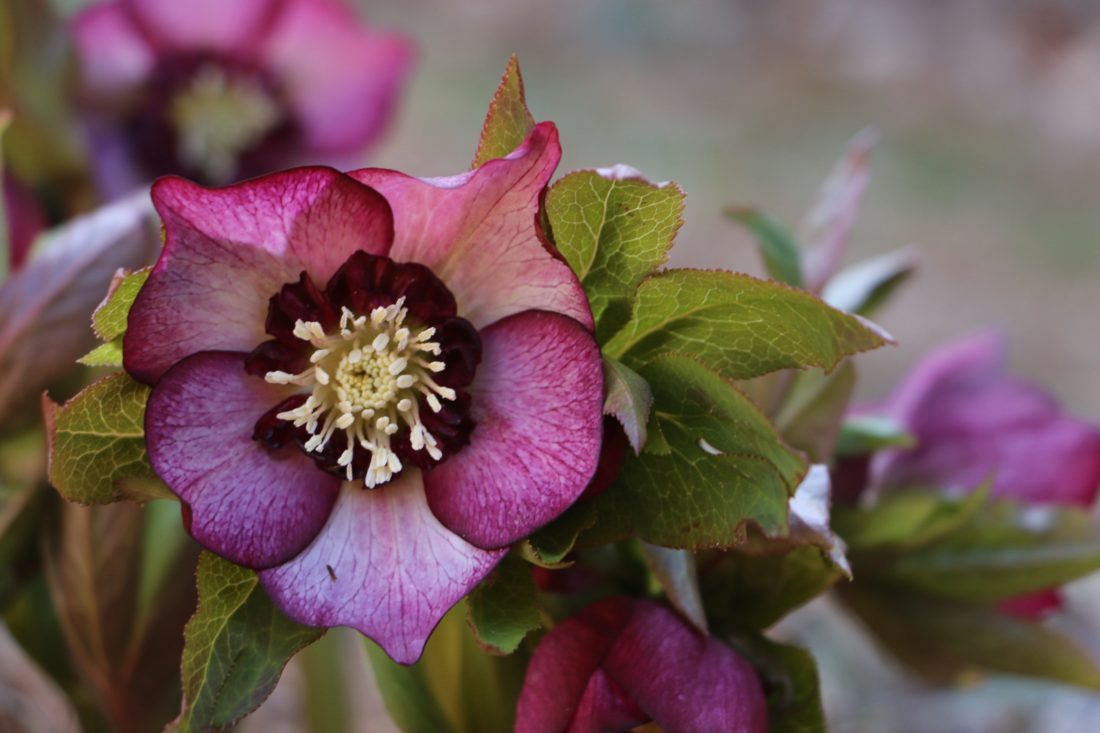
6) Do Camassias need special treatment? Mine didn’t come up! Ugh.
I have not grown Camassia personally (though they are on my list to try). As a native (of North America) I would not expect any need for special treatment. (Check with Carrie Preston on this – they need wet –
Landscape designer Carrie Preston advises that Camassias like heavy clay soil.
“They <camassias> are native to he Pacific Northwest and do well in that climate. For that reason they also do well in the Netherlands (where Carrie lives) as our climate is similar. Not sure how they fair in other regions.”
-Carrie Preston
Also – Is it possible that they were dug up by local critters? I often have quite a few lilies and tulips go missing – camassias may also be a tasty treat that can go missing as soon you you plant them. Many gardeners will try to time planting these especially vulnerable bulbs as late as possible hoping that the ground will freeze very soon after planting and provide a level a protection.
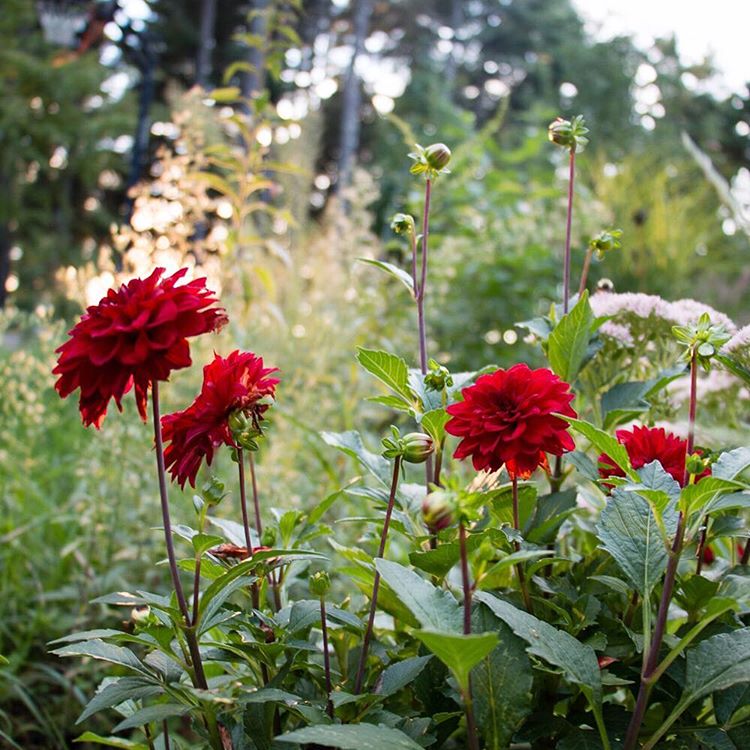
7) Do all Dahlia bulbs need to be brought inside in New England Winters?
Dahlias are not technically bulbs – they are tubers, and they are generally not hardy only to about zone 8 (USDA). A New England (zone 3-7) winter will be too cold for them to survive.
If you want them to overwinter, you must dig them up in late October or early November (before the ground freezes).
Bring your dahlia bulbs (Tubers) indoors for the winter. Yeah, pretty much (sorry). I don’t know of any dahlias that are hardy in zones below USDA Zone 8 (and New England is all Zone 7 and below).
7.5) What is the difference between bulbs and tubers?
Both bulbs and tubers are a plant adaptation that enables a plant to withstand harsh conditions by entering a period of dormancy. They are both mechanisms for storing nutrients for survival; the only difference is that a bulb is a modified leaf structure, whereas a tuber is a modified stem structure.
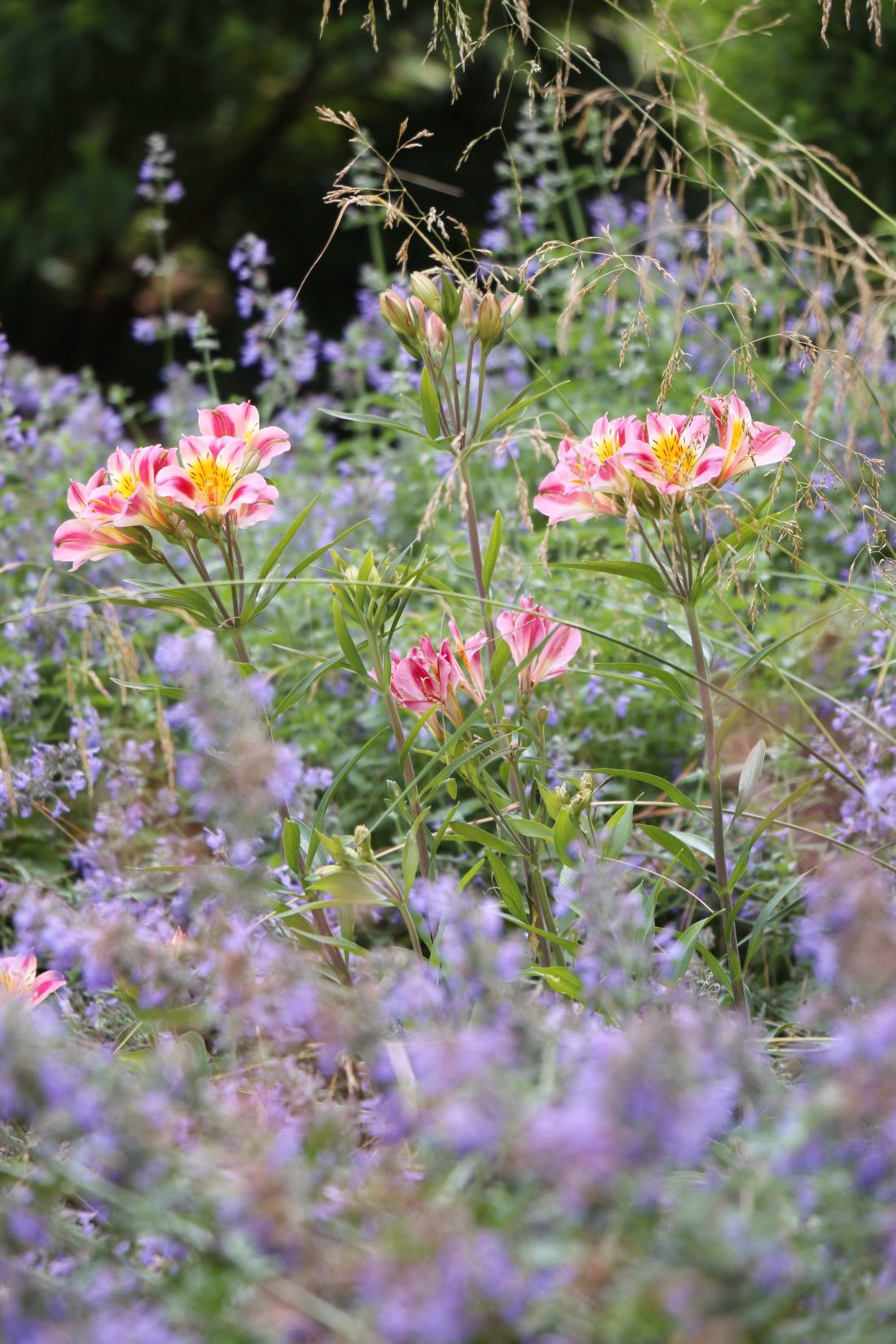
Here are a few of my favorite bulb companion plants:
8) What are some companion planting ideas for once the flowers on the bulbs die back?
Daylilies (especially with the similar foliage of daffodils) and grasses.
Grasses work with almost anything since they typically come in as spring bulbs, and their foliage is fading. Also, grasses can be a good partner for summer bulbs like lilies since you can easily choose a grass that is similar in height or slightly shorter than the bulb stalk, and often, the grass will help to provide a natural support system to bloom stems.
Another plant I’ve enjoyed combining with flower garden bulbs is a low-mounding Japanese maple (which doesn’t get more than a foot tall). The branches are low enough that the bulbs grow through them, but when the tree leaves come out, you can tuck the dying foliage away underneath.
It helps if you plant the bulbs deep into your beds (not deep in the ground – follow the planting depth instructions for best results) but deep into the beds.
Don’t line the flower bulbs up at the front of the bed. Plant them throughout the bed – all the way to the center or even the back.
You have to remember, particularly with spring bulbs, that there is little to nothing else out at that time of the year. All your other plants will still be small or may not have even emerged, so edge planting can look silly when there is nothing else. A planting that covers the whole depth and breadth of a bed will be more interesting, and when the rest of the garden gets going, you will have an all-natural distraction system from all the dying foliage.
The perfect companion plant for bulbs is any community of other plants that fill the garden beds.
My current favorite companion plant for garden bulbs is the lawn in the form of a Dutch-style stinzenplanten.
9) What are spring bulbs that rabbits won’t eat? Or, Same question – but with deer.
There are a bunch (rabbits and deer have similar preferences, so “deer-proof bulbs” should also discourage bunnies). Some of the most popular are daffodils, hyacinths, grape hyacinths, crocus, snowdrops, alliums, and fritillaria.
>>Flowerbulbs.com is a great resource for learning more about deer (and rabbit) resistant bulbs.
10) Do winter garden bulbs exist?
Some of the very early flowering bulbs can bloom in the late winter, depending on the region. Snowdrops, daffodils, and other narcissus sp., crocus, and winter aconite are some examples.
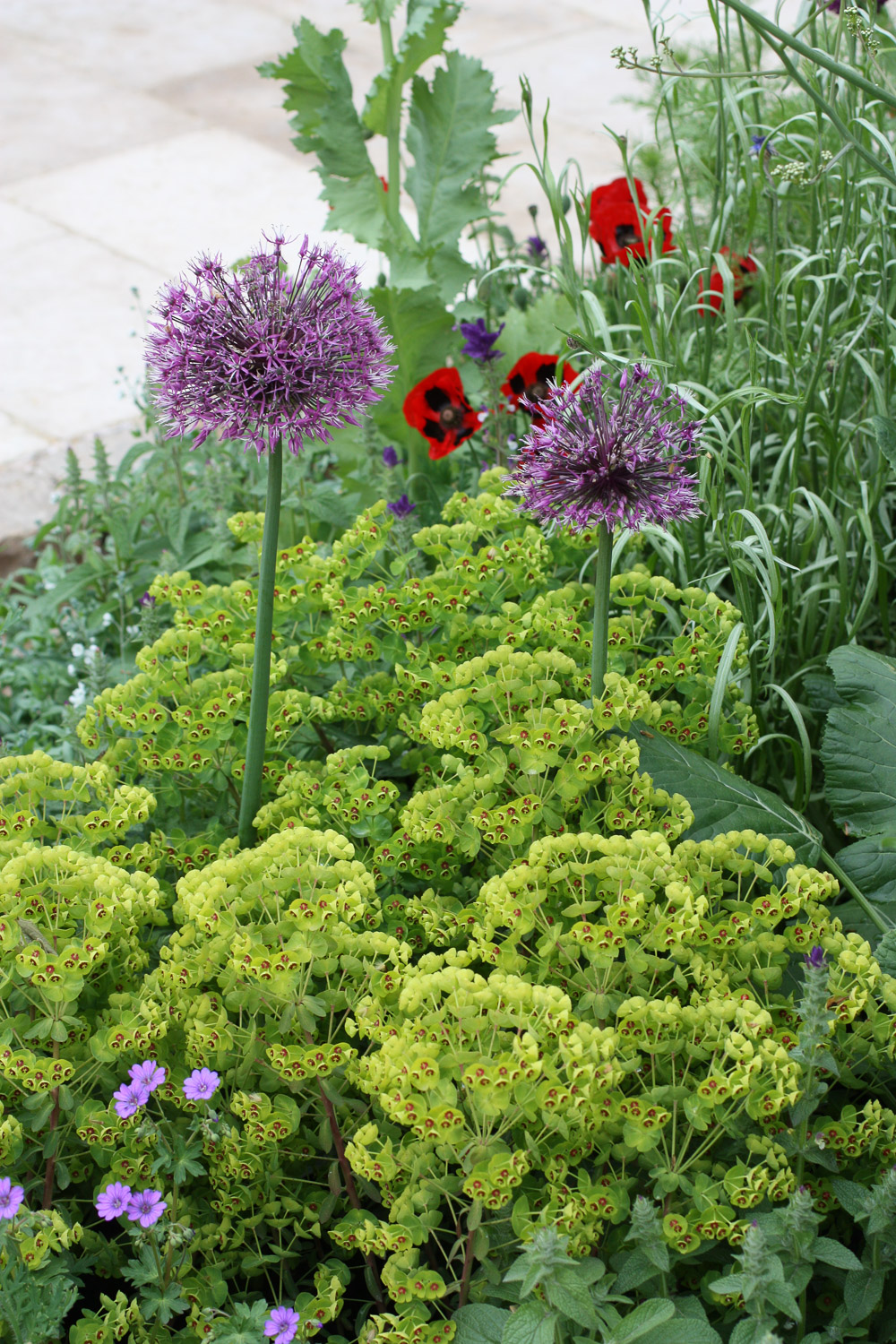
11) Have you heard if alliums will grow ok here in Atlanta zone 7b, I’ve heard both sides!!
I haven’t heard both sides (and I don’t live in Atlanta – so maybe that is why I’ve missed out on this allium debate) – but when I asked a friend who lives nearby in zone 7b Virginia she said “Absolutely! Most allium sp. are hardy from USDA zones 3-8 an I personally have grown them in zone 7b in VA for years ☺️”
If you are having trouble, it maybe that you have a variety of allium that needs a cold period that is colder or longer than your garden can offer. Since Atlanta is climatically at the edge of the ideal growing area, you will have to experiment to learn what species will work for you.
If you have an area of coolness in the garden (cold are can settle into low areas) this would be the best place to grow your Allium.
12) Are there any alliums that will grow without full sun? I live in the woods – daffodils do great.
I grow chives (Allium schoenoprasum) in a good amount of shade and they do well (though admittedly the do better in the full sun). I’ve read that nodding onion and allium karataviense can also stand some shade without completely nodding over.
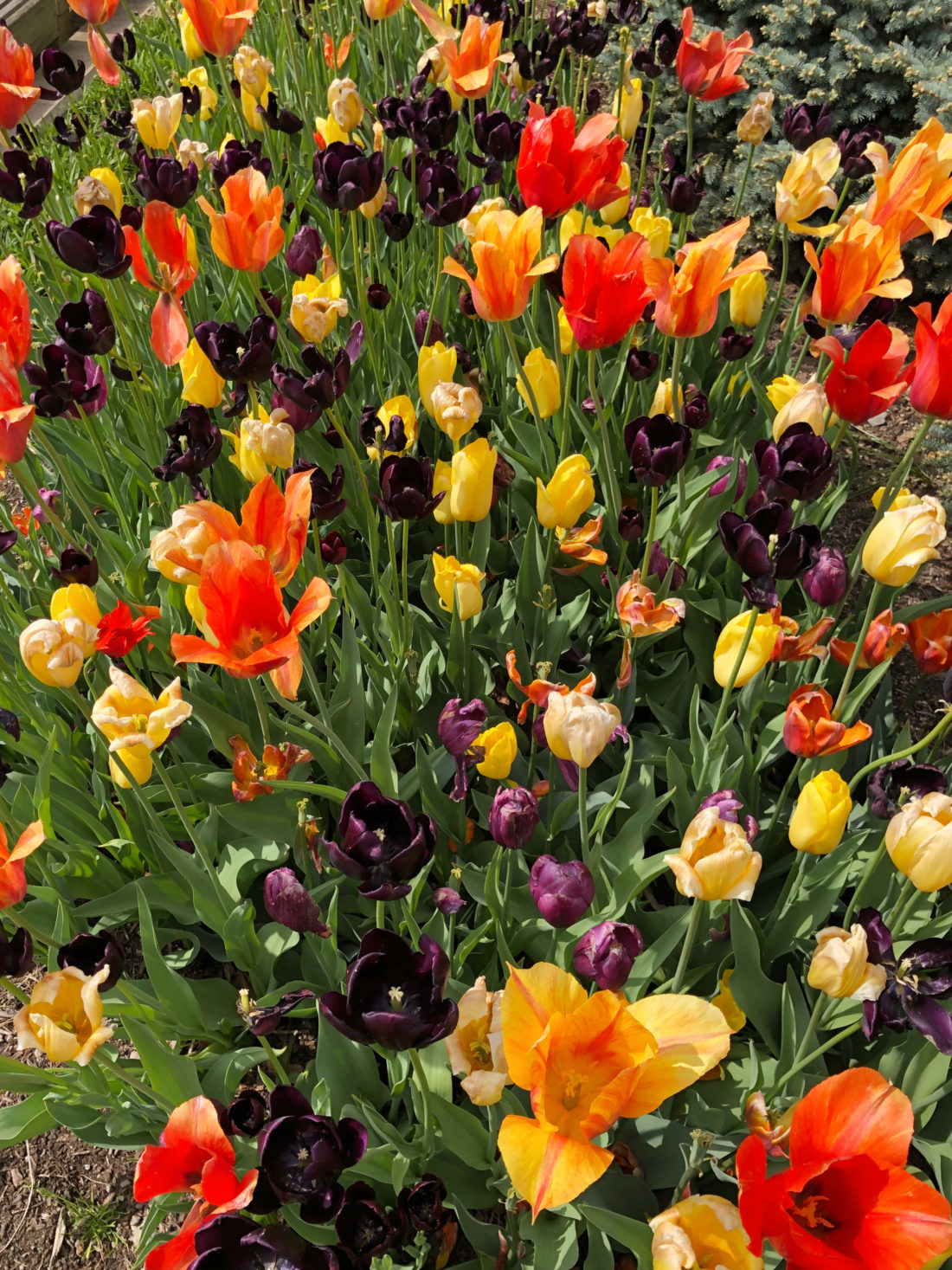
13) What are the best tulip varieties that come back year after year reliably?
One of the biggest reasons that tulips fail to return year after year is pressure from animals. Squirrels, chipmunks, rabbits, mice, voles, moles and deer all like to eat the tulip bulbs.
Try to plant them very late in the fall/ early winter season – just before the ground freezes. The frozen ground will offer them protection from hungry animals.
Dutch style hybrid tulips will weaken over time and most will stop blooming at a few years. On average, you can expect between 3-5 years of returning blooms from these types of hybrid bulbs (so long as they are not eaten).
If you love tulips and want to enjoy them for longer, or want to try varieties that may also naturalize in many gardens, you should try ‘species tulips’, ‘botanical tulips’ and wild tulips.
Tulipa fosteriana and Tulipa kauffmania are both wild tulips that will naturalize and return more easily. Additionally, Tulipa greggi was developed from Turkistan native plants and is subsequently referred to as a ‘Botanical Tulip’ (having been developed directly from the species plant). True species tulips are small and best in rock gardens or as part of a stinzenplanten lawn. These tiny tulips are the most perennial and long lived of all the tulips, they often have more than one bloom per stem and they will naturalize.
Often it is animals over environmental conditions that cause tulips to not come back year after year. mine get dug up and eaten as a prized delicacy by my local squirrels and chippies.
What other questions do you have about bulbs? DM me on Instagram or drop a comment here to ask, and I’ll add them to this post!
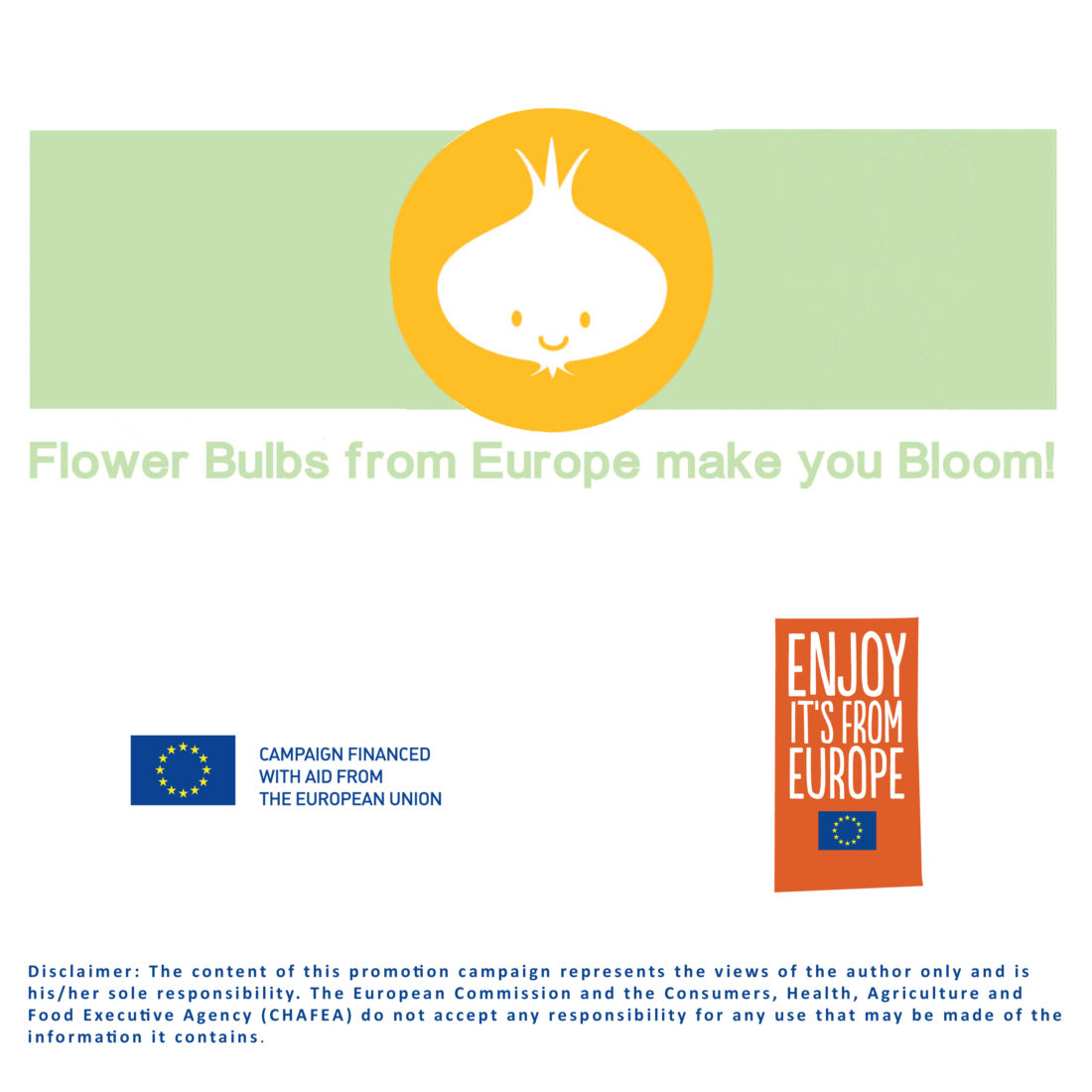
Hello, I was given two large pots of pink hyacinth around Easter. They bloomed beautifully but now what can I do to save the bulbs? Do I plant them outside as I would in the fall? Or do i need to refrigerate them until fall and then plant outside? I live in the Chicago area. Thanks!
Hi Joan – you can just plant them outside now or later in the fall (if you want to leave them in the pot). Let the foliage and flowers die back naturally (don’t cut it away early). You don’t need to refrigerate them – winter will take care of that. Assuming they were forced – sometimes they don’t bloom the next year but they will recover in time and start blooming again.